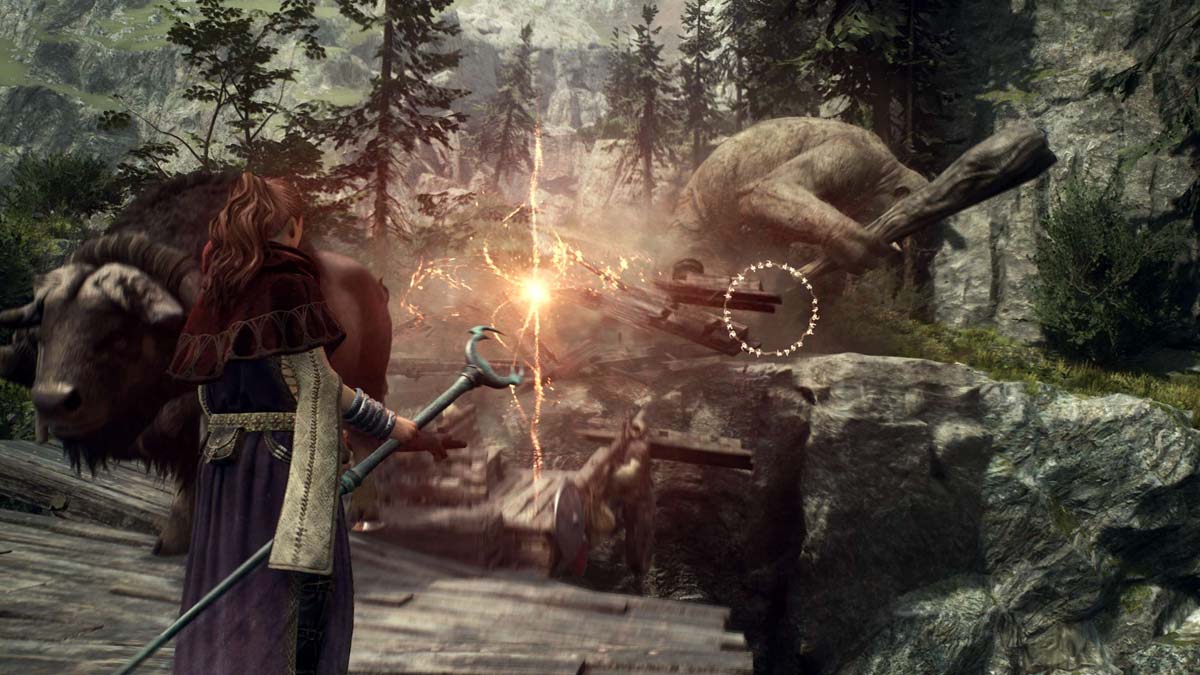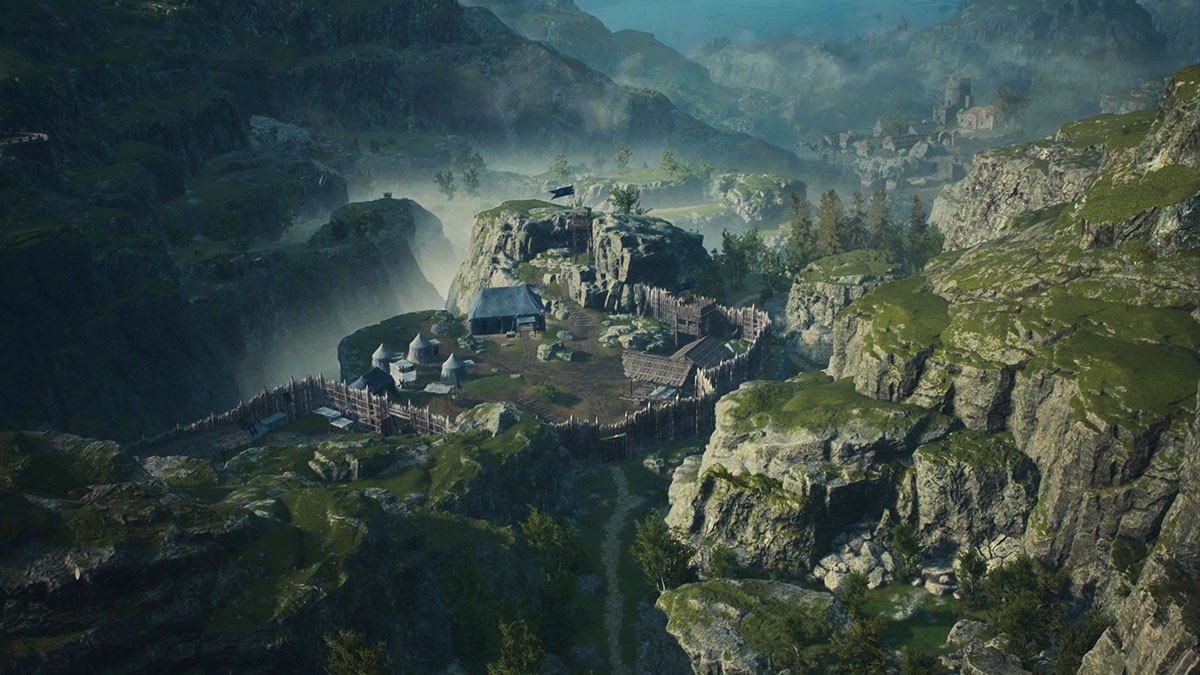Convenience is a funny thing. On the one hand, you have traditional fast travel, keeping you from needing to travel the same road a thousand times to get from point A to point B.
On the other hand, there is fast travel in Dragon’s Dogma 2, an expensive and limited resource that forces you to explore more often than you would when you warp between towns. And for my money, the way this game handles the mechanics is one of its best features, and I think you’ll agree with me.
Exploration is King

For me, the beating heart of any open-world game is exploration and discovery. I play these games because I travel the world and uncover hidden nooks and crannies filled with treasure, see amazing new places, and face secret challenges. In Dragon’s Dogma 2, the fact that fast travel is so limited only serves to make those discoveries more frequent, as a path you ran through a dozen times can still reveal hidden dungeons with some amazing gear.
That constant exploring is especially important for me, because if I have the option to freely fast travel between places I’ve been before, I will always choose that option. Dragon’s Dogma 2‘s relatively limited access to the Ferrystone fast travel item ensures that I’ll be retreading old ground. My poor sense of direction also means I’ll be checking the map frequently, and maybe I’ll come across a path I’ve yet to go down that leads to a cave with some sweet gear I’d never have found otherwise.
On a more practical level, the less you fast travel in Dragon’s Dogma 2, the more of the world map you reveal. The minimap can mostly get you where you need to go, sure, but unless you’re extremely thorough in your search of every nook and cranny, having the map filled out will help you find all the hidden mysteries. It’s also nice to know how far you need to travel and what the most direct routes are if you absolutely must beeline it from point A to point B.
Perhaps most importantly, if all you do is fast travel from one place to another, it’s almost impossible to encounter some of Dragon’s Dogma 2‘s coolest quests. I know you find a lot of those in towns and cities, but there are plenty out in the world as well. Many of these somewhat hidden quests also take you off the beaten path, and if you simply teleport everywhere, you won’t know where to go to complete them.
As a final note, if you choose to Ferrystone from place to place constantly, you won’t encounter other player’s pawns nearly as often. Yes, I know you can always rebuild your pawn team at one of the dozens of Riftstones, but I can’t count the number of times I’ve lost a summoned pawn and been all but saved by one just wandering the open world. That or one of them happening upon my party fighting a difficult world boss and lending a hand.
Pawn to E4

Like most action RPGs with giant boss fights, if you fight world monsters alongside a full team of pawn teammates, you trivialize the entire encounter. That’s especially true if you have a high-level Sorcerer or Thief in your party. And as much as getting help from random pawns as you explore is important, even more valuable is their knowledge from other worlds.
Doing nothing but fast travel in Dragon’s Dogma 2 robs you of the opportunity to have your pawn or other player’s pawns mention where they’ve seen a treasure chest or a cave or some other neat thing. While this isn’t an apples-to-apples comparison, in Elden Ring, the same thing can happen if you summon another player into your world. The catch? They can’t come with you into the cave or dungeon. Your party of pawns can provide combat support, open hard-to-reach chests, and otherwise enhance your experience in ever-evolving ways.
Finding Riftstones out in the wild is also a great way to diversify your party of pawns, as well as be more deterministic in the kinds of pawns you want to bring along, as well as their attributes. Specific world Riftstones showcase pawns with specific inclinations, specialties, and even character heights and other aesthetics. Your search options in all the cities in Dragon’s Dogma 2 have more general search parameters, which are usually fine, but you won’t find anything more specific or fun unless you go out and explore.
It’s Just Pretty

The world of Dragon’s Dogma 2 is more traditional Western fantasy than most fantasy games released recently, but that doesn’t mean it can’t offer some breathtaking vistas and environments. Sure, learning where to find specific enemies to farm their materials is important, but so is finding the perfect spot by the sea to watch the sunset or simply letting the world go by.
If aesthetics aren’t a driving force for exploring Dragon’s Dogma 2, then remember that Seeker’s Tokens exist, and because there are 240 of the things scattered through every corner of the game, you’re bound to find them at the ends of the earth, should you decide to look there. And it is the ends of the earth that hold some of the game’s most beautiful locales, so snap some photo mode pics while you’re out hunting for treasure.
Small Things Matter
I could go on about the smaller things infinite fast travel would remove from playing Dragon’s Dogma 2, from missing special monster fights to world events to lost lore and an incomplete understanding of the story. My point, however, is that all the big and little things Dragon’s Dogma 2 would lose with an Elden Ring-like fast travel system is too long to list.
There are also enough ways to get Ferrystones and Portcrystals that you’re almost never found wanting for a way to teleport back to a city or point of interest, but doing so is a decision or sacrifice you need to make, and sometimes you’d be better off toughing things out for just a few more minutes for an amazing reward you’d have otherwise never have found.
We hope you enjoyed my article. Check out our Dragon’s Dogma 2 game hub for our guides covering the game, like 100% Achievement Guide‚and How to Complete Civil Unrest in Dragon’s Dogma 2.







Published: Apr 15, 2024 07:30 am